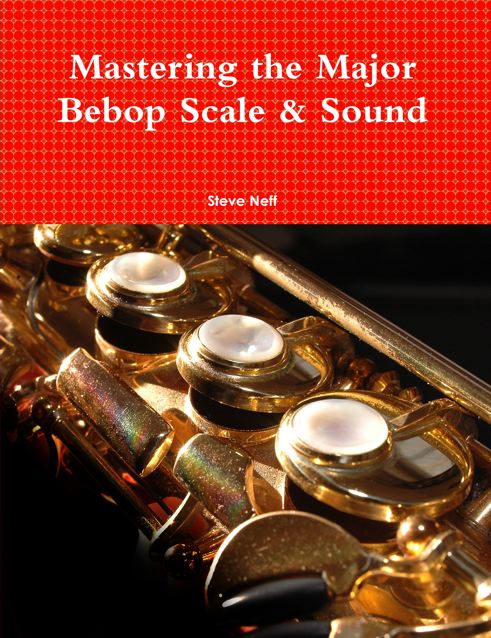I thought it would be interesting to run a poll to see where everyone places their reeds on the mouthpiece when setting up. I know many of you will think this is nonsense and you might assume that we all do this the same but I have had so many students come in my studio that do different things when putting on their reeds. I’ve listed the choices I see most often as the answers. If you choose to give more detail as to why you place your reed in that position and the benefits of it feel free to in the comments below. Thanks, Steve
Search Neffmusic
Footer
Recent Comments
- Steve on Les Becs d’Autan MB1 Pilgrimage Tenor Saxophone Mouthpiece Review
- Johnny Hedlund on Les Becs d’Autan MB1 Pilgrimage Tenor Saxophone Mouthpiece Review
- Bart on Theo Wanne Brahma Gold Tenor Saxophone Mouthpiece Review
- Ron S Golec on Theo Wanne Slant 2 Tenor Saxophone Mouthpiece Review
- Dominique on Sakshama Branford Marsalis Model Delrin Tenor Saxophone Mouthpiece Review
Top rated products
-
 Mastering the Major Bebop Scale & Sound (Digital PDF Book)
Rated 5.00 out of 5$14.99
Mastering the Major Bebop Scale & Sound (Digital PDF Book)
Rated 5.00 out of 5$14.99 -
 Tune of the Week-Softly as a Morning Sunrise Lesson
Rated 5.00 out of 5$9.99
Tune of the Week-Softly as a Morning Sunrise Lesson
Rated 5.00 out of 5$9.99 -
 The Style of Dexter Gordon-Lady Bird Lesson 1
Rated 5.00 out of 5$9.99
The Style of Dexter Gordon-Lady Bird Lesson 1
Rated 5.00 out of 5$9.99 -
 Tune of the Week-Days of Wine and Roses Lesson
Rated 5.00 out of 5$9.99
Tune of the Week-Days of Wine and Roses Lesson
Rated 5.00 out of 5$9.99 -
 Tune of the Week-Invitation
Rated 5.00 out of 5$9.99
Tune of the Week-Invitation
Rated 5.00 out of 5$9.99
Product tags
alto sax
alto saxophone
approach notes
audio lesson
bebop scale
beginner
beginner saxophone
blues
blues licks
blues patterns
blues scale
blues scales
diminished scale
dominant chords
ear training
fundamentals
II-V-I
improvisation
jazz improvisation
jazz lines
jazz patterns
jazz sax
jazz saxophone
jazz standard
jazz standards
licks
Mastering the Blues Scale
Michael Brecker
modern improv
modern improvisation
online lesson
patterns
playing outside
practice habits
reading music
sax basics
sax lessons
saxophone
scales
smooth jazz
steve neff
tenor sax
tenor saxophone
video lesson
video lessons

What I do is line it up with the tip of the mouthpiece while looking straight at the mouthpiece. I usually see just a sliver of the mouthpiece above the reed. On some mouthpieces the reed seems to like being a little bit higher than that though so I don’t see any of the mouthpiece. This allows more of the reed to vibrate and makes it easier to blow for me…………. I notice that when the reed is slightly higher than the mouthpiece it tends to give me a crisper response. Sometimes it makes the response too crisp and accented so I move the reed down a little in that case.
I usually align it with the tip so it is as close as I can get it, then play it and will adjust from there if I need to. As the reed gets softer I normally end up moving it higher than the tip and if the reed feels a little to stiff I back it down from the tip just a bit. If that fails, then I work on the reed and start over or try another reed.
I’m surprised pressing your reed down to line it up with the tip of the mouthpiece is in the lead! My teacher when I was a kid told me not to do that. Not sure why not but ever since I have taught all my students not to do that……………
I would think there might be a danger of reducing the reed’s elasticity if you applied continual pressure to the tip.
Wow! Pressing the reed down to match the tip is still in the lead. I’m very surprised………..
I voted other. I start with the reed slightly lower than the tip and then I’ll adjust it as needed a few times within the first few minutes, if needed, depending on the day, reed, weather, my mood, and the reed’s response. I also may pull the “Nomar Garciaparra” and loosen/re-tighten/loosen/re-tighten my ligature a few times.
FWIW, my teacher taught me the same when I was young about not pressing the reed down. She said you want to see just a bit of the black of the mouthpiece tip.
-Jon AKA 1953SBAALTO
All of my information, music and equipment was acquired over the Internet with the exception of the Alto Saxophone itself. I found in my mothers closet a 1939 C.G. Conn 6M viii alto saxophone that had only bee played six months and put back in the case until I found it in an attic in the late 90’s. The pads were dry so I replaced them and had the saxophone gone over by a reputable musician and technician. I read every Internet article on learning to play and as a result aligned the ligature 1/32 lower than the mouthpiece. I switched from the original seeway standard by Conn to the Yamaha 4c. The 4C was bored out .0002 to much which caused me to add Kleenex over the cork to get a good seal. This change of mouthpieces alone did not make it any easier to hit the upper register notes. Loosening the ligature just so it was held in place and not tightly stressed made a huge difference and made playing the upper register a breeze. Both the mouthpiece and ligature make a remarkable difference.
Tom, Sometimes just dipping the cork end of the neck in boiling water for a second will expand the cork back to it’s original size so the 4C will fit. Might be worth a try. Steve
I often align the reed tip just barely above the mouthpiece tip (Vandoren Jumbo Java T45 & A45) so that I can just slightly see the reed tip when looking down on the MP from above. By trial and error I found that this gives me a little better control and more crisp response. I have not found this to be equally effective on all MP’s so I think it depends on the specific components.
To expand your neck cork, heat it with a match slowly rotating the neck cork around the flame. This works great and will add years of service to your neck cork.
Larry,
I dip my neck cork into boiling water. The heat expands it but you don’t have to worry about burning it with a match…………..
Hi steve,
all the years I always started with aligning the reed by “eyeball-matching” with the mp’s tip, with a little but not completely pressing the reed down (so I’d hopefully had survived as Your student :-)). After that some minor corrections in some cases took place just by trial-and-error-method. Your reed placement poll brought my attention a little more to that point – and I got really mixed results with different mouthpieces and reeds by moving the reed a little more back or forward. So I feel there might be no generally applicable/valid rule, but that had to be subject of some serious investigation…
Walter
(a little more aware of reed-positioning now)
This recipe was whispered to me by an old tugboat captain, right before he breathed his last…
1. Slurp the reed thickly all over.
2. Wet a small patch of a Kleenex with water and scrub the mouthpiece rails and tip clean.
3. Mount the reed. Center the reed base to the mouthpiece flat, left to right.
4. Move the reed up until the mouthpiece tip just disappears, looking at the mouthpiece and reed straight on.
5, Proceed to tighten the screws while holding the reed base clamped by your right thumb. Tighten the screws moderate tight. Play several minutes.
6. Play low G. Tilt your head slowly left and right. See how the sound changes. If it is live sounding, raspy, or thin when head tilted to the extreme right then the upper right hand tip of the reed is too far left. The sound usually goes thick and dull if you then tilt your head to the extreme left, in this example. So the tip of your reed needs to be moved slightly to the right. Loosen the lig a bit while clamping the reed base with your right thumb, and shift ONLY THE REED TIP slightly to the right, and retighten lig. The reed will appear to be a little crooked on the mouthpiece now, and it is, but we are trying to balance sound from the combination of reed and mouthpiece. Run this test again, you want the reed to sound the same at both extremes of head tilt. Vice versa the above if opposite initial head tilt results.
This works very well. I have found that many reed turn into great players with nothing more than this simple procedure. Remember to re-check it after extended playing, or if you move the reed tip up/down.
All I know is when I took my first lesson with Joe Allard and I put the reed first up against the mouthpiece table and then went to put on my ligature he yelled at me! ” No, no always the ligature on first!” Lesson learned! I remember he taught me the thumb test where then you would press the reed up against the mouthpiece and check it against the tip -just a little sliver of black would be showing, then make slight adjustments. I remember seeing Joe Henderson up close at Fat Tuesdays in NYC and he would constantly be fussing with the reed adjustment against the tip.
Chris, Well, you can’t argue with Joe Allard…………..(or with Joe Henderson for that matter……)